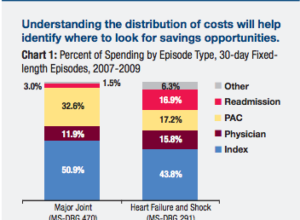Before you get too far down that road, here are 7 things you should consider before rebranding your medical practice. Before you get too far down that road, here are 7 things you should consider before rebranding your medical practice.
1. Do you really need to?
Even if you know that rebranding your practice is going to be a lot of work, it can still be an appealing prospect. There are a lot of ways it can help your medical practice; by encouraging growth, increasing revenue and helping you gain a competitive advantage. But is it really worth it to your practice to rebrand right now? Here are some common reasons why a business might need to rebrand:
Your Practice Has Expanded
Do you run a gynecology office that’s expanded to cover obstetrics as well? Then it’s probably time to rebrand. You don’t want your old branding to limit the scope of what you have to offer. The same is true if your practice has expanded beyond your geographical name. If the Vancouver Eye Clinic is opening an office in Portland, for example, then rebranding is a good strategy
A Merger or Acquisition
If you’ve merged or acquired another medical practice, rebranding is likely required. It’s common after a merger to create a new brand, combining the two practice’s names to help maintain the loyalty of existing customers.
Legal Issues
Legal issues can sneak up on any kind of business and make rebranding a necessity. The most common issue is having a brand name, logo, or slogan too similar to that of a trademarked company’s. Even if you’ve been using it for years, it might not be worthwhile to take the case to court and pay legal fees.
Negative Publicity
It’s not very likely that your practice has been associated with a corporate collapse or crime, but if your reputation isn’t healthy, then you should first, fix the root cause of the problem. And preferably tackle your reputation issues from the ground up. Simply renaming the company and coming out with a new logo and website in my opinion is a shady way to get out from under that negative press. Sometimes your brand can end up being associated with something that you have no control over and had nothing to do with, but it can still bring up negative thoughts and emotions in your customers. A good example of this is the sports drink Tsunami, that had to rebrand in 2005 after a giant tsunami killed hundreds of thousands in Japan.  Now: It’s quite possible that your original branding was boring in the first place. Maybe nobody has any idea your practice exists, or the great medical marketing strategies of your competitors leave your business in the shadows. If you think your branding is hurting your ability to compete in the market, then it’s time to rebrand.
Now: It’s quite possible that your original branding was boring in the first place. Maybe nobody has any idea your practice exists, or the great medical marketing strategies of your competitors leave your business in the shadows. If you think your branding is hurting your ability to compete in the market, then it’s time to rebrand.
2. Understand what it takes.
If you’ve decided that rebranding is worthwhile for your practice, the next thing you should consider is how much of an undertaking it really is compared to other medical practice strategies. Here’s the deal: Rebranding will take a lot more effort than just designing a new logo and updating your stationary. You’ll need new signage and a website update as well. You can’t cut corners on this — research has found that 60% of US millennials expect their experience with brands to be consistent online, in store, or on the phone. You’ll probably want to purchase a new domain name, and all your social media profiles should be updated with your new graphics and brand name. It will also be essential to update your local citations (Yelp, Citysearch, Google+, etc.) and wherever else your business may appear if you want to remain relevant in Google Local search.  Want to know the worst part? After everything’s said and done, it may have cost you tens of thousands of dollars- not to mention the value of your time investment. At the same time, rebranding a business comes with certain sacrifices. For one, all that awareness you built up with your old brand will disappear. You’ll likely end up losing some customers in your push to appeal to new ones. And that’s not all you’ll lose. It’s common knowledge in the marketing world that rebranding results in a drop in search rankings, at least for a while. However, there are some best practices you can follow to minimize the effects. What’s the bottom line? Make sure you have the time and resources when rebranding your medical practice, or consider holding off for a more opportune time.
Want to know the worst part? After everything’s said and done, it may have cost you tens of thousands of dollars- not to mention the value of your time investment. At the same time, rebranding a business comes with certain sacrifices. For one, all that awareness you built up with your old brand will disappear. You’ll likely end up losing some customers in your push to appeal to new ones. And that’s not all you’ll lose. It’s common knowledge in the marketing world that rebranding results in a drop in search rankings, at least for a while. However, there are some best practices you can follow to minimize the effects. What’s the bottom line? Make sure you have the time and resources when rebranding your medical practice, or consider holding off for a more opportune time.
3. Have your vision in mind.
When developing your branding strategy, it’s easy to get caught up in the details such as brand colors and logo design. These are important steps, but they’re not the first steps to rebranding a company. Before you start the process, you need to spend time evaluating your practice’s current strengths and weaknesses. Rebranding is an effort to solve a problem with your existing messaging. So, what exactly is that problem? Here’s how to find out:
Talk to People
You probably have some idea of what’s wrong with your current brand, but it’s more important to know what others think. Spend some time reaching out to your current customers, employees, or even experts in the healthcare industry to get their opinion about your medical practice’s brand and services.  If you can get people to be honest with you and paint a clear picture of what they do and don’t like, this valuable information can help you achieve your overall goals. You should have a good idea of the core messaging that you want to have after your rebrand, and have a clear understanding of how it will solve your current branding problem.
If you can get people to be honest with you and paint a clear picture of what they do and don’t like, this valuable information can help you achieve your overall goals. You should have a good idea of the core messaging that you want to have after your rebrand, and have a clear understanding of how it will solve your current branding problem.
4. Do research.
Next, you need to spend a lot of time figuring out what elements could really improve your rebrand. Here’s how:
Consider Your Competition
The best way to understand where you stand in your local healthcare market is by comparing yourself to the competition’s marketing strategy. Spend some time researching your direct and indirect competitors in your market. Try to determine: What is their brand message? What are their overall attributes? How do they bring value to their customers? Answering these questions will help you figure out where you’re currently positioned in the market, and help you brainstorm ideas that can help you stand out from your competitors when rebranding your medical practice.
Consider Your Own Interests
Here’s the best part: Rebranding is the perfect opportunity for you to cater to your own interests and draw in the kind of customers you want. Say you’re a dentist. What aspect of your job do you like doing most (Implants, cosmetic, family, etc)? Use your rebrand as an opportunity to specialize in the type of services that you like to provide.
Consider Psychology of Colors
When working on a logo redesign, choosing the right colors is one of the most important branding decisions for any business. This is crazy, right? It really isn’t. In fact, color increases brand recognition by 80% and directly relates to consumer confidence. For healthcare providers, it’s even more important to choose colors that help convey a message of responsibility and trust for potential customers. In general, “cooler” colors such as whites, blues and greens tend to suggest stability, trust, and calm — valuable feelings to convey to your target audience. Here’s an overview about how colors convey different moods: 
5. Consider Your Exit Strategy
I know a lot of healthcare professionals who never even think about their exit strategy until they’re close to retirement. But here’s the deal: If you want to get the most out of rebranding a business you’ve dedicated much of your life to building, than your planned exit strategy should be a big part of your branding decisions. For example, if you expect your practice to one day be acquired or sold off to a friendly buyer, then your brand messaging needs to be appealing to potential buyers as well. If you hope to keep the business in the family, then you should develop family-oriented messaging. When rebranding your medical practice, be sure to consider your long-term goals and exit strategy to optimize the value of your efforts.
Do a Trademark Check
In order to avoid legal issues down the road, you should check other registered trademarks that have similarities to your own chosen branding. Trademarks are usually country-specific (except for the EU), and the US government has a searchable database you can use. If you find that your company name and logo are sufficiently unique, then take this opportunity to register your own trademark to protect your brand.
6. Rethink your target customers
Most brands have a very narrow view of who their target audience actually is. And truthfully, the demographics of your audience when you first started your practice are likely a lot different now. Rebranding is the perfect opportunity to reevaluate your target customers and develop a healthcare digital marketing strategy that is appealing to them.  Image via Entrepreneur Of course all of this will depend on your specialization. If your target persona is about 65+, then it would be worthwhile to continue catering to the Baby Boomers and Generation X. Otherwise, an important group to consider are the Millennials. Research has shown that they’ll spend more than $200 billion annually by 2017. And it gets better: Millennials are very brand loyal. There’s a ton of data out there on how the different demographic groups respond to brand messaging, as well as what they expect from a business. Consider this when developing your branding strategy.
Image via Entrepreneur Of course all of this will depend on your specialization. If your target persona is about 65+, then it would be worthwhile to continue catering to the Baby Boomers and Generation X. Otherwise, an important group to consider are the Millennials. Research has shown that they’ll spend more than $200 billion annually by 2017. And it gets better: Millennials are very brand loyal. There’s a ton of data out there on how the different demographic groups respond to brand messaging, as well as what they expect from a business. Consider this when developing your branding strategy.
7. Create a plan.
Rebranding a business is a big undertaking compared to other healthcare marketing strategies. Once you’ve figured out the problem you want to change and have a fairly good idea how to change it, it’s time to get everyone else on board with your medical practice marketing ideas. Make the process easier by including:
- Company stakeholders
- Management and workers
- Creatives you may hire (for logo/website redesign, etc.)
If everyone is informed and on board, it will make it easier to create a plan of action and delegate tasks. Make a comprehensive plan of everything that you need to accomplish with your rebrand, a timeline for how it’s going to happen, and clear instructions of who’s in charge of what. If you’ve done this part well, then the bulk of your responsibility in the rebranding strategy will be checking up with everyone and making sure the changes are going smoothly.
**BONUS** 8. Communicate clearly and consistently.
Any marketer will tell you that your rebrand needs to be publicized. But in order to make the most of your current client base and ensure they’re along for the journey with you, you’ll need to do something more creative than just write a press release.
Tell a Story
There’s a reason you decided on rebranding your medical practice, and your current clients will want to know why. You don’t have to tell them all the gritty details, but you should make efforts to tell a story that puts the adjustments in a positive light and reassures your current clients of your continued commitment to meet their needs. Otherwise, they might come to their own negative conclusions on why you’re rebranding.  Get creative in your email marketing by writing a personal message from the owner, or creating a video to tell the rebranding story. Let your customers know the rebrand is happening before-hand, and keep them up to date on its progress, so they feel involved in the evolution. Another great retention strategy is featuring some of your current patients as case studies or reviews for the rebranded practice’s website. This will offer reassurance that you really are still the same business.
Get creative in your email marketing by writing a personal message from the owner, or creating a video to tell the rebranding story. Let your customers know the rebrand is happening before-hand, and keep them up to date on its progress, so they feel involved in the evolution. Another great retention strategy is featuring some of your current patients as case studies or reviews for the rebranded practice’s website. This will offer reassurance that you really are still the same business.
Consider Client Touch Points
When it comes to actually drawing in new clients with your rebrand, you need to consider how your practice is perceived at every touchpoint. Communications, for example, is a touchpoint you may want to develop a new strategy for. Just consider these statistics if you’re trying to draw in Millennials:
- 99% aren’t influenced by advertising
- 33% of them review blogs before making a purchase
- 62% of them want to engage with brands on social networks
- 75% of them expect brands to give back to society
This is valuable information to know about when considering client touch points. According to research, Pay-per-click advertising, for example, wouldn’t work as well with this demographic. But test it. If you have the budget, test it to make sure. It’s not uncommon that there will be an anomaly. Consider rebranding to be a fresh start. Your goal should be to be the business your target audience expects you to be after your rebrand, otherwise your efforts may all be for nothing.
The Takeaway
Rebranding is a big undertaking for your healthcare practice, but one that can offer insurmountable rewards, if you:
- Rebrand at the right time
- Know what you’re getting into
- Have a clear vision
- Do your research
- Rethink your audience
- Create an actionable plan
- Communicate clearly with current and future clients
Conclusion
Keep in mind these 7 points when rebranding your healthcare practice, to ensure you’re making the right change at the right time, the right way.









